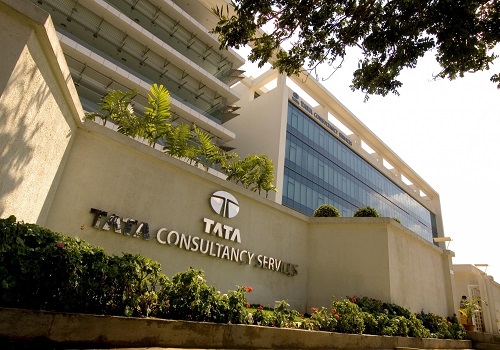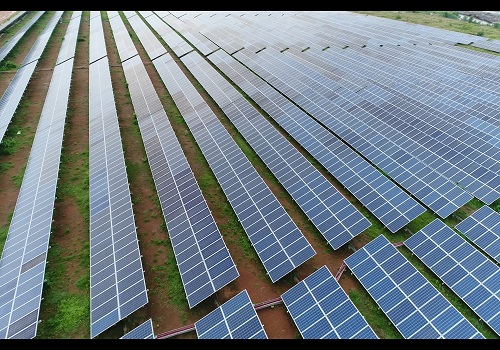Occupiers across major markets in India willing to pay higher rentals for quality office supply

Despite a cost-conscious mindset, occupiers across the Asia Pacific region are willing to pay higher rentals for superior quality offices, particularly in locations which facilitate talent acquisition, according to Colliers’ latest edition of Expert Insights | Asia Pacific Office Markets April 2024. The report highlights the rising priority of APAC business leaders across industries to optimise resources, maximise savings and drive growth as they navigate a dynamic business landscape in 2024.
India's top office markets too have experienced a notable 4-8% YoY surge in rentals, driven by robust demand and simultaneous infusion of high-end, quality supply. After witnessing a dip during the pandemic years on account of subdued demand, occupier exits and remote work trends, rentals have seen a considerable growth so far in 2024, surpassing pre-pandemic levels. Strong office market performance in India has been fueled by robust economic growth and renewed occupier confidence. Select high-performing markets across the top 6 cities have specifically seen upto 20% YoY rental rise. Some of the examples include MG Road - Delhi NCR (18.2% YoY), SBD1 (Includes Koramangala, CV Raman Nagar, IRR, Indiranagar, Old Airport road, Old Madras Road, Rajajinagar and others) - Bengaluru (15.5% YoY), and Pallavaram Thoraipakkam Road (PTR) - Chennai (10.9% YoY). This surge in rental prices reflects the growing preference of occupiers who are willing to pay a premium for buildings replete with state of the art & modern amenities, adorned with green certifications across strategic locations. Owing to superior quality construction and high-end amenities, quoted rents of the new office supply are typically up to 20% higher compared to average rentals across select premium micro markets.
Pan India Weighted Average Quoted (WAQ) rental trends (2019-2024)

Pan India Weighted Average Quoted (WAQ) rental trends (Q1 2024)

Rental comparison of new office supply with average market rents

The report also highlights six priorities to achieve cost efficiency in office real estate.
1. Align office strategy to business goals: Decisions around owning versus leasing should be aligned to location objectives and expected length of requirement for each office.
2. Portfolio strategy: Consolidation opportunities, monetising non-core assets, along with right-sizing and repurposing offices to match new ways of working, is key to thriving in today’s dynamic environment.
3. Maximise lease negotiations: Consider shorter-term and coworking options to minimise up-front costs. Renegotiate leases and contracts.
4. Data-driven space utilisation: Leverage technology to automate routine tasks, track space utilisation to enhance overall operational efficiency.
5. Prioritise energy efficient systems and upgrade: Achieving long-term cost savings by prioritising sustainability initiatives and green building practices.
6. Drive employee engagement and satisfaction: Ensure a positive work environment to drive employee engagement, satisfaction and productivity.
"In response to evolving market dynamics, office occupiers in India are revolutionizing their cost optimization strategies, by embracing hub-and-spoke model, expanding flex space portfolios, and leveraging technology. Suburban and peripheral areas, offering affordability, are witnessing heightened demand, indicating a preference of sub-dollar or near-dollar markets. Flex spaces, especially with the rise of core-plus-flex models, are gaining prominence. At 8.7 million square feet of leasing in 2023 and highest ever space takeup by flex spaces, the segment has witnessed remarkable expansion in recent years. Flex spaces are likely to continue the momentum in 2024, and is expected to constitute 15%-20% of total office leasing across the top 6 cities, underscoring occupiers' pursuit of agile, cost-effective solutions to meet their evolving workspace needs." said Arpit Mehrotra, Managing Director, Office services, India, Colliers.
Further, Asia Pacific is benefitting from more cost-conscious occupiers on a global scale, with greater uptake from Global Capability Centers (GCCs), particularly in markets such as India.
India’s Global Capability Centers- offering a compelling value proposition for global corporates
With global corporates increasingly seeking to optimize resources, maximize savings, and drive growth, India offers a compelling proposition. During Q1 2024, India continued to witness traction in GCC leasing activity. A significant 5 million square feet (msf) of leasing activity by GCCs, represented 37% of total office leasing across the top six cities. Looking ahead, GCCs are projected to lease between 45-50 msf of office space in the next two years, constituting around 40% of total demand. Heightened GCC activity is fueled by diverse occupiers spanning sectors such as BFSI, Technology, Engineering & manufacturing, and healthcare. Additionally, there's a persistent preference for green-certified Grade A office spaces . Sub and near dollar micro markets remain pivotal for GCC space uptake in India, contributing nearly 80% of the leasing activity in 2019-23.
"India's ascent as a premier GCC hub in the APAC region underscores its unmatched value proposition for global corporates. In the next 3 years, the projected leasing of 45-50 million square feet (msf) of office space by GCCs is poised to further solidify India's position, driving over 40% of the country's office leasing activity. Fueled by a robust talent pool, strategic location, and a steadfast commitment to sustainability, India remains a beacon for diverse occupiers aiming to foster innovation and fuel growth. Moreover, with over 150 msf of office supply at various stages of construction in the next three years, India continues to offer a plethora of high-quality office spaces at competitive prices, catering to the diverse needs of occupiers.", said Vimal Nadar, Senior Director and Head of Research, Colliers India.
Above views are of the author and not of the website kindly read disclaimer























